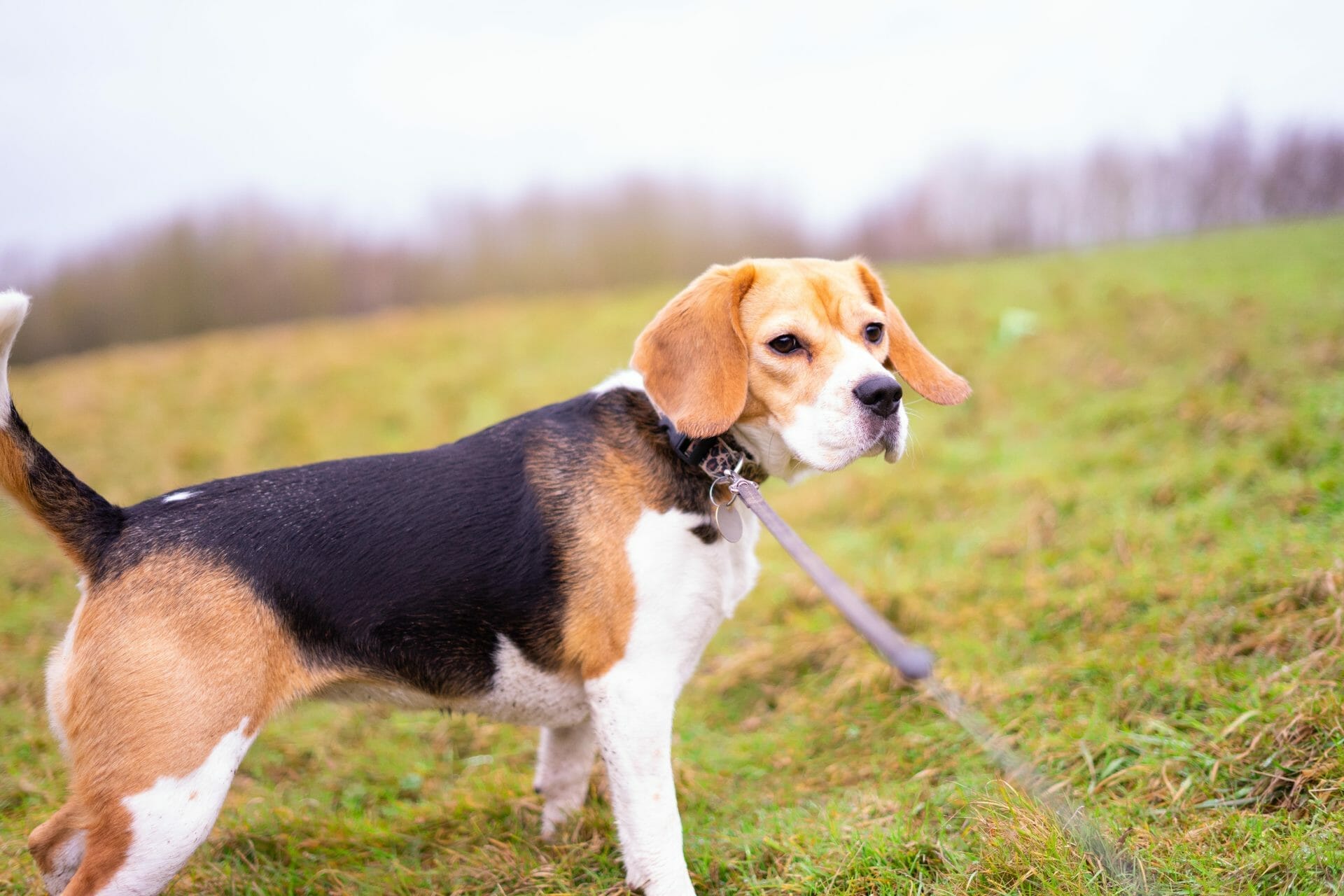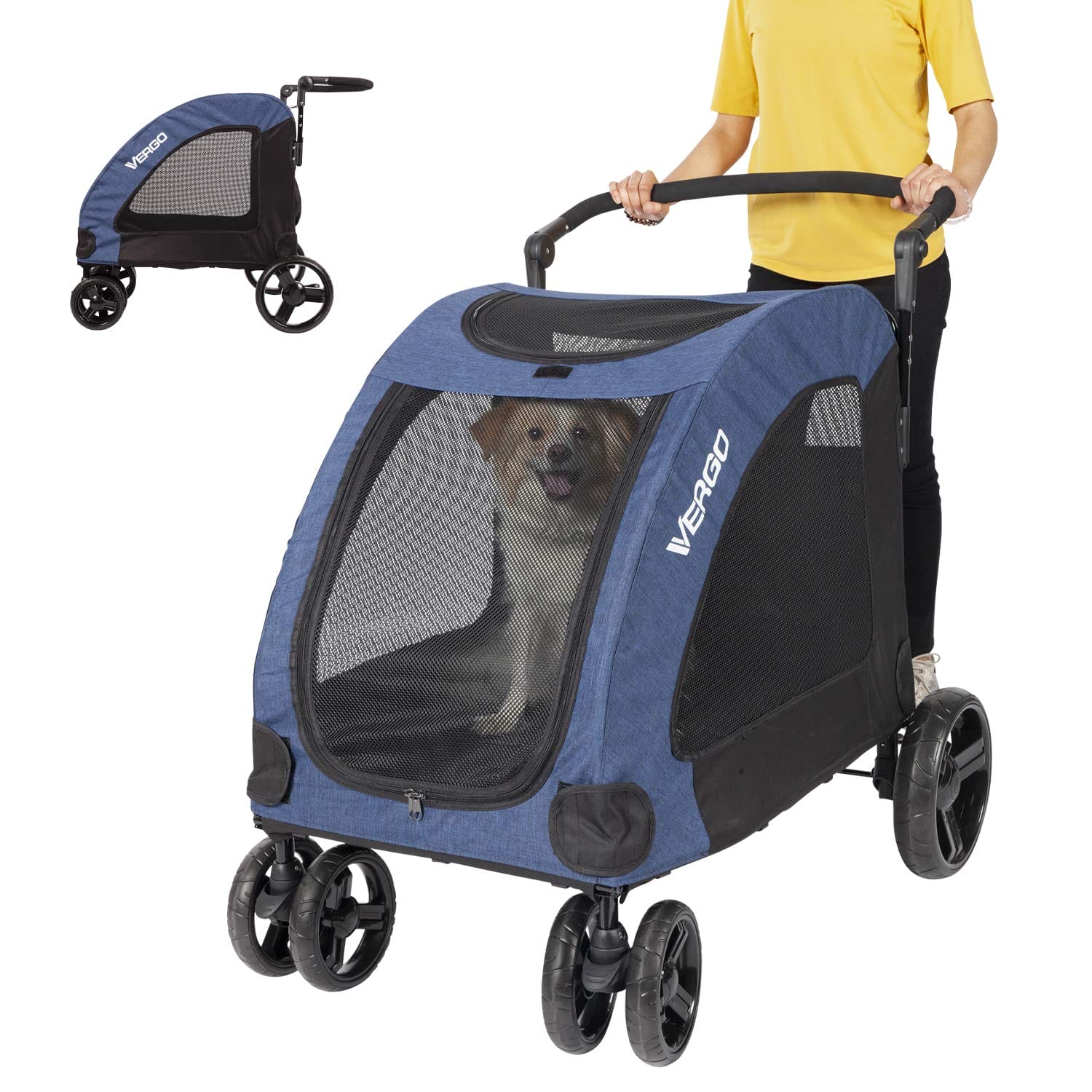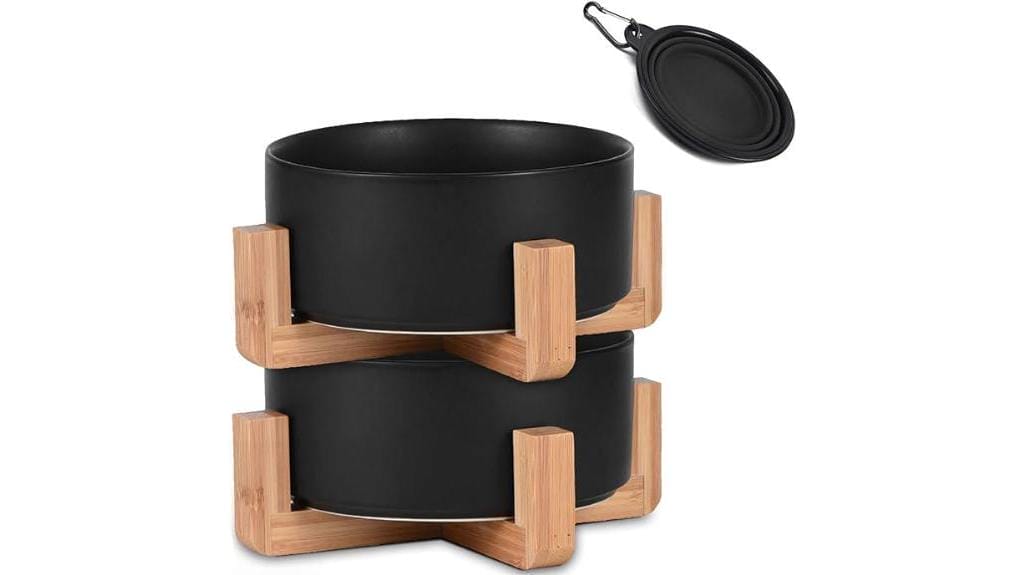Have you ever wondered how to discipline a beagle? If so, this article is for you! As an owner of two beagles myself, I know first-hand just how difficult it can be. But don’t worry – with some patience and the right approach, disciplining your beloved pup is totally doable. In this article, I’m going to share my top tips for successfully setting boundaries and teaching your beagle what behavior is and isn’t acceptable in the home. So if you’re ready to get started, let’s jump right into it!
The first thing to keep in mind when disciplining a beagle is consistency. Beagles are smart dogs that require consistent reinforcement of rules. Every time they exhibit a bad behavior like barking or digging, make sure to immediately respond by firmly saying “no” and providing them with alternate activities they can engage with instead. This will help reinforce the idea that these behaviors aren’t okay while still allowing your pup plenty of opportunities for playtime!
Next up, positive reinforcement should also play a role in successful beagle discipline. When your pup exhibits good behavior such as sitting quietly next to you or playing nicely with their toys, reward them with treats or verbal praise. Not only does this affirm that they’ve done something right – it also encourages them to continue exhibiting desirable behaviors in the future! So there you have it – my top tips on effectively disciplining a beagle. With these strategies under your belt, you’ll quickly find yourself well on your way towards having an obedient pup who knows exactly which behaviors are expected from them at all times!

Positive Reinforcement
“A stitch in time saves nine,” goes the old adage. This rings true when it comes to disciplining a beagle; if you start early and use positive reinforcement, your pup will become obedient. Positive reinforcement is an effective way of teaching your pet good behavior, as well as reinforcing existing commands that have already been taught. Let’s take a look at some top tips for using positive reinforcement on your beagle.
When it comes to training and discipline, rewards are key. Beagles respond very well to treats and other forms of reward such as verbal praise or physical affection like belly rubs or ear scratches. Make sure to give out these treats regularly whenever they display desired behaviors, so they know what kind of actions will result in them getting rewarded. Additionally, ensure that you keep the treat routine consistent – this helps maintain trust between you and your pup while also keeping their attention focused during their training session.
Beagles can also benefit from obedience classes where they learn basic commands such as ‘sit’, ‘stay’ and ‘come’. Classes provide an opportunity for both owners and pups alike to interact with each other within a structured environment, which further reinforces these new skills through repetition and practice alongside fellow beagles. Not only does this help build upon their core understanding of commands but ensures that they remain attentive throughout class activities by offering regular rewards after successful completion of tasks set before them.
In short, positive reinforcement is one of the best ways you can effectively teach your beagle proper behavior while maintaining a strong bond built on trust between both parties involved. With patience and consistency being two major components here – make sure to create clear expectations for your furry friend along with providing ample reward-based opportunities – ultimately ensuring that your pup understands how to properly behave under any given situation!
Establishing Boundaries
Once you’ve begun to build a rapport with your pup and have established a positive reinforcement system, it’s now time to move onto establishing boundaries. Setting limits and providing clear behavior guidelines can help reinforce the commands that were previously taught and ensure that your beagle understands what is acceptable and unacceptable behaviour in any given situation. It’s important to keep rules consistent – this will let them know how their actions are perceived by you as well as others around them.
When introducing new rules or boundaries, make sure they’re simple enough for your pup to understand – this way they won’t feel overwhelmed trying to remember too many complex instructions at once. Additionally, provide plenty of opportunities for practice; repetition encourages learning and helps ingrain these behaviors into their memory better than one-time lessons do. As always, reward good behaviour when it occurs so that your pup knows what kind of behaviours result in treats!
The key here is communication: be clear about expectations and reiterate those same expectations whenever possible, ensuring that both parties remain on the same page throughout the entire process. Make sure to review existing boundaries every once in awhile so that all parties involved are aware of any modifications made over time, while also maintaining consistency along the way. With patience and persistence, soon enough you’ll have an obedient furry companion who knows exactly where they stand in terms of behavioural norms and expectations!
Creating A Routine
Now that boundaries and expectations are in place, it’s time to take things a step further by creating a routine structure for your pup. Establishing a daily schedule allows your beagle to better understand their responsibilities as well as the consequences of not following rules – this helps them learn discipline over time. Additionally, having a set routine can help reduce any anxiety they may have due to being unsure of what’s expected from them.
When constructing a routine for your pup, consider both short-term goals such as potty training or long-term objectives like learning new commands or tricks; assign specific tasks at designated times throughout the day so that there is an understanding between you and your pup about when certain activities should occur. Remember: consistency is key! To ensure compliance with these rules, don’t forget to incorporate rewards into the process – positive reinforcement will encourage good behaviour and give your furry friend something extra to look forward to each day.
Regular exercise is also essential for maintaining proper behavioural standards; provide plenty of opportunities for physical activity throughout the day so that pent up energy doesn’t lead to undesirable behaviours in situations where more discipline is required. Walks, playtime sessions, even quick runs around the house – all these little moments can make a big difference in reinforcing existing guidelines while simultaneously teaching lessons on self-control along the way. By developing consistent habits and implementing reward systems every now and then, you’ll soon have yourself a happy (and obedient) beagle who knows exactly how to behave!
Using Treats And Rewards
It’s time to put all that hard work and dedication into practice! With a consistent routine in place, one of the most effective methods for teaching your pup good behaviour is through treats and rewards. Afterall, who doesn’t love a little reward every now and then?
When it comes to shaping your beagle’s discipline and training skills, positive reinforcement goes a long way – not only does it keep them engaged with their tasks but also encourages desirable behaviours. In other words: when they do something right, make sure they know it! Whether it’s verbal praises or physical treats (like small pieces of food or toys), providing some form of recognition each time your pup follows instructions can help solidify any boundaries or expectations you’ve set in place. When used correctly, rewards are an incredibly efficient tool for building trust between you two as well as reinforcing desired habits over time.
One thing to remember though; try not to give too many treats throughout the day as this will eventually lead to unhealthy eating habits – instead, opt for more frequent play sessions so that your pup won’t become overly reliant on these types of rewards. By consistently rewarding appropriate behaviour while simultaneously setting clear boundaries from the get-go, you’ll soon have yourself a four-legged companion capable of following commands and showing respect at home and out in public – making both yours and their life much easier!
Redirecting Unwanted Behaviour
Now that you have a better understanding of how to use positive reinforcement and treats to shape your beagle’s discipline, it’s time to move onto redirecting unwanted behaviour. While rewards are essential in reinforcing good habits, sometimes they can’t completely stop misbehaving – especially when the pup is distracted or overly excited. In such cases, proper scolding and redirection techniques are needed to help curb any aggression or disobedience.
When trying to redirect your pup’s bad habits, there are several things you should keep in mind:
- Redirecting Habits: Whenever your pup exhibits inappropriate behaviour – like jumping on people or chewing furniture – try not to punish them for it; instead offer an alternate activity as a distraction (like playing with their favourite toy). This helps teach them which behaviours are appropriate and which aren’t without using negative reinforcement.
- Stopping Misbehaving: If your pup doesn’t respond well to distractions, then use verbal cues such as ‘no’ or ‘stop’ followed by gentle physical contact if necessary. Remember though – never hit your pet as this will only lead to more aggressive tendencies over time!
- Avoiding Distractions: To prevent further episodes from occurring, make sure all potential triggers (such as loud noises) are removed from the environment before beginning training sessions. That way, you can focus on teaching desirable behaviors while avoiding any possible sources of stress or anxiety.
- Curbing Aggression: Finally, if you notice signs of aggression arising during playtime (barking/growling), immediately remove yourself and your pup from the situation until both parties have calmed down. Then once everyone has settled, slowly reintroduce each other back into the game so that the bond between owners and pets isn’t compromised in any way.
Using these methods alongside rewarding desired behavior will give you greater control over shaping up your beagle’s obedience skills while also creating a loving relationship based around trust and mutual respect.
Professional Training Assistance
Despite our best efforts, sometimes it can be difficult to train a beagle on our own. According to the American Kennel Club (AKC), up to 60% of all pet owners seek professional training assistance when dealing with their pup’s discipline issues. If you find yourself in this situation, don’t worry – there are plenty of resources available that can help get your pooch back on track!
One option is to enroll your furry companion in doggy obedience classes or specialized programs designed for specific breeds such as beagles. These types of courses allow pups and their owners to work together with an experienced trainer so that each individual learns the proper techniques needed for successful discipline. Additionally, many facilities also offer daycare services which provide socialization opportunities and supervised playtime – perfect for those who may not have enough time in the day to dedicate solely towards training sessions.
No matter what path you decide to take, remember that consistency is key when disciplining a beagle. This means setting firm boundaries from the very beginning and sticking to them no matter what distractions arise throughout the process. With a little patience and dedication, you’ll soon see results that will make both pup and owner proud!

Frequently Asked Questions
What Type Of Environment Is Best For A Beagle?
When it comes to keeping a Beagle happy and healthy, providing them with the right environment is key. Finding an environment suitable for a Beagle can be challenging, but there are certain elements you can look out for in order to create the ideal setting.
First of all, Beagles need enough space to move around comfortably – this could mean having access to your backyard or taking regular walks outside. Additionally, they should have some comfortable places like beds where they can rest and relax throughout the day. This will help keep their energy levels balanced as well as give them somewhere safe to retreat when needed.
Furthermore, it’s important that they receive plenty of mental stimulation such as toys and activities that provide mental challenge and exercise. Social interactions also play an important role in helping them stay content; so try to take them on outings with friends or family members whenever possible. Finally, since Beagles love exploring, make sure they have access to outdoor areas where they can explore safely while ensuring proper safety measures are taken at all times (such as securing any openings).
Creating an environment that provides these aspects will ensure your Beagle stays healthy both mentally and physically whilst still being able to enjoy themselves!
How Can I Be Sure I’m Disciplining My Beagle Correctly?
Disciplining a beagle correctly can be tricky, but there are some methods that work well. It’s important to have an effective discipline technique in place so you can ensure your beloved pup is responding the way you want them to. The key is finding the correct balance between discipline and punishment for your pooch.
There are many different techniques when it comes to disciplining a beagle without punishing them. Positive reinforcement is one of the most popular options – rewarding good behavior with treats or other incentives helps reinforce positive behaviors while minimizing bad ones. You can also use verbal cues like “No!” or “Stop!” to indicate that certain behaviors are not acceptable in your home. Consistency is essential when using these types of disciplinary tactics; if you don’t follow through every time, then your efforts will likely fail.
It’s also important to remember that all dogs learn differently, so what works for one may not necessarily apply to another. Beagles may respond better to rewards than punishments, but it ultimately depends on their personality type and individual needs. If you’re having trouble figuring out how best to approach training your pup, consider consulting a professional pet trainer who specializes in canine behavioral issues – they’ll have plenty of tips and tricks up their sleeve that could help get things back on track quickly and easily!
How Do I Know When It’s Time To Seek Professional Training Assistance?
It can be daunting to try and figure out the best way to discipline your beagle. After all, there’s no one-size-fits-all approach when it comes to finding the right training techniques for a pup of this breed. That said, knowing when it is time to seek professional assistance from an experienced trainer is key in helping you get on the path towards success with disciplining your beagle.
To start off, take a look at what kind of results you’re getting with the various disciplinary methods that are currently being used. If these aren’t producing any measurable improvements or if they seem counterintuitive for your particular situation, then it might be wise to consider looking into some outside help. This could mean speaking with family members who have experience training dogs or even researching local dog trainers online who specialize in working with Beagles so as to learn more about their unique needs and behaviors.
Another factor worth considering is whether or not you have been consistent in applying the same disciplinary tactics each time something goes wrong. Dogs thrive on consistency and routine so it’s important that we don’t allow ourselves to become too lax with our expectations when it comes to them – otherwise they will quickly lose respect for us as their owners! It may also prove beneficial to attend seminars or classes focused solely around canine behavior and learning how best to use positive reinforcement instead of punishment when disciplining our furry friends.
At the end of the day, having access to specialized knowledge regarding beagle training may make all the difference between success and failure when attempting to effectively teach our pups proper etiquette and obedience skills – so don’t hesitate reach out for help if needed! With just a bit of extra effort now, you’ll save yourself plenty of headaches down the road by ensuring that both you and your beloved pet are able to build a strong bond built upon trust and mutual understanding
What Are The Most Effective Methods Of Discipline For A Beagle?
When it comes to disciplining a beagle, there are several different methods that can be used. It’s important to understand the best techniques for your particular dog and situation in order to ensure success. From punishment-based approaches such as timeouts or leash corrections, to reward-based training like treats or praise, there is an array of options available.
Punishment-based techniques can be effective when done correctly and consistently, but must also be monitored closely so they don’t cause physical or psychological harm. Timeouts should always involve taking away something the dog loves – like playtime – rather than shouting or physical contact. Leash corrections should only be given if absolutely necessary and never in anger; using too much force could lead to fear aggression later on.
On the other hand, positive reinforcement through rewards-based training can go a long way towards reinforcing good behavior while also strengthening the bond between you and your pet. By giving treats, toys, or verbal praise whenever your pup does something right, you’ll quickly start seeing results with fewer missteps along the way. Providing consistent feedback will help keep them focused during their lessons and make them more likely to continue following orders over time.
No matter which technique you choose, consistency is key when it comes to disciplining a beagle successfully. Make sure everyone involved understands how each method works and why it’s being implemented – this helps create clear expectations from both sides and promotes understanding from all parties involved!
How Can I Ensure That My Beagle Learns To Respect Boundaries?
The question of how to ensure that my beagle learns to respect boundaries is an important one. Establishing a sense of order and structure in your pup’s life can help set him up for success as he matures into an adult dog. Teaching your dog the rules and expectations you have of them ensures that they learn proper behavior early on, making it easier to manage their actions later in life.
One of the most effective methods of boundary training for beagles is consistency. A clear routine with consistent discipline techniques establishes trust between you and your pup by letting them know what’s expected from them at all times. Consistency also helps keep things fair; if your pup knows exactly what kind of behavior will get a positive reward or negative consequence, they’re more likely to behave accordingly.
Disciplining a beagle should always involve positive reinforcement when possible, such as rewarding good behaviors with treats or verbal praise. This encourages them to continue respecting boundaries rather than punishing bad behaviors alone. If physical punishment is necessary, it should only be used sparingly and never out of anger — this could lead to confusion or fear in your pup instead of learning how to respect boundaries properly.
Ultimately, teaching your beagle about respecting boundaries takes patience and dedication but is achievable through consistent discipline techniques and positive reinforcement!
Conclusion
It is essential to remember that disciplining your beagle does not have to feel harsh. Disciplining your beagle with love and patience will go a long way in creating an obedient, well-mannered pup. With the right environment, discipline techniques, and professional training assistance when needed, you can ensure your beagle learns to respect boundaries while still feeling loved and appreciated.
Discipline doesn’t have to feel like a chore; it can actually become a bonding experience between you and your beagle. Taking the time to learn about how best to communicate with your pet goes beyond just teaching them rules – it’s forming a relationship of mutual understanding and trust. It’s like building a bridge for both of you so that even if there are occasional bumps along the way, both parties know exactly where they stand.
In short, learning how to properly discipline your beagle involves more than simply punishing bad behavior – it requires taking into account their individual needs and personality traits while also maintaining consistency in instruction. The reward? A happy, loving companion who knows what is expected of them!





Leave a Reply
You must be logged in to post a comment.